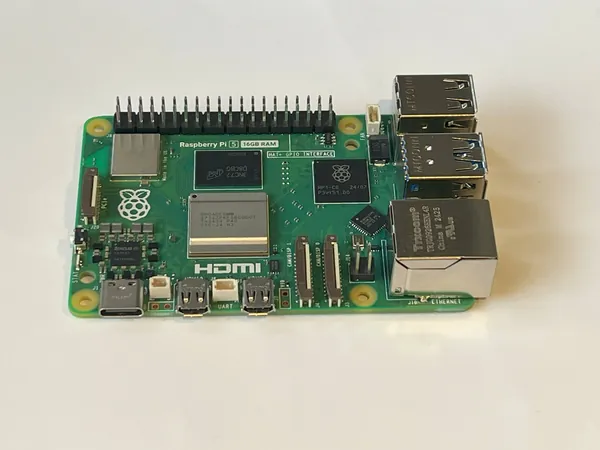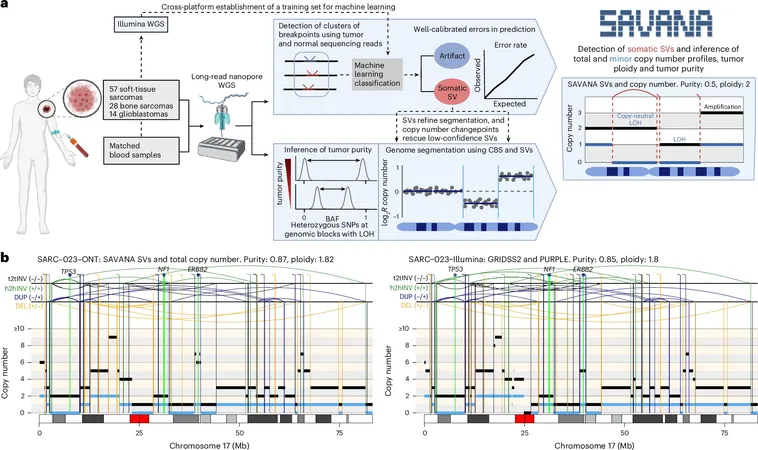
Unveiling the Raspberry Pi 5: Now with a Jaw-Dropping 16GB!
2025-01-09
Author: Arjun
The Raspberry Pi has significantly evolved from its modest beginnings, now showcasing its latest marvel: the Raspberry Pi 5 with a stunning 16GB of RAM. This compact powerhouse is taking the maker community by storm, yet it raises some eyebrows regarding its cost.
Once a budget-friendly option, the Raspberry Pi has seen a remarkable uptick in both capabilities and pricing. The initial models, launched in 2012, featured a mere 256MB of memory and cost about $30. Fast forward to today, users can acquire a grandly upgraded version with 16GB of RAM, priced at a striking $120. In comparison, an 8GB version is available for around $80.
For potential buyers, the question remains: is the extra memory worth the investment? If your projects involve running multiple containers or applications requiring substantial memory, this could be a game-changer. The Pi’s co-founder, Eben Upton, noted that many users are interested in utilizing the Raspberry Pi for cost-effective clusters in specialized applications like computational fluid dynamics, where 4GB per core is deemed optimal.
Additionally, running large language models (LLMs) can significantly benefit from the extra RAM, avoiding performance bottlenecks associated with lower memory options. Furthermore, for those looking to install heavier operating systems like Ubuntu, the 16GB variant would be a wise choice to accommodate their higher resource demands.
While significant improvements have turned the Raspberry Pi 5 into a robust little device, if you’re not in need of extensive RAM, you might want to consider the 4GB or 8GB models instead. The upgrades are largely based on RAM; the CPU remains unchanged and maintains similar temperatures under load.
Upton hinted that this is likely the final form of the Pi 5 we're going to see, explaining that while the chipset can theoretically support 64GB of memory, technical challenges and higher costs limit those enhancements for now.
As for pricing, the transition from lower RAM configurations to the 16GB model has not been gentle on wallets. The progression from 2GB to 4GB is a modest $10 increase, and a $20 jump to move from 4GB to 8GB appears manageable. However, the step to the 16GB increases by a hefty $40—an eye-popping leap for this quaint computer.
Upton acknowledged the price escalation is due to increased costs of silicon, but he also pointed out that some competitors charge far more for similar increments in memory.
So, is the new 16GB Raspberry Pi 5 a worthy buy? For specific users, absolutely! But it's crucial to assess your personal computational needs. If you don't require the expanded memory, consider sticking with the less expensive options, allowing you to invest in the exciting peripherals that enhance the Raspberry Pi experience.
In conclusion, while the Raspberry Pi 5, especially the 16GB model, marks an impressive leap in tech evolution, users should carefully weigh the benefits against the rising costs before deciding to upgrade.




 Brasil (PT)
Brasil (PT)
 Canada (EN)
Canada (EN)
 Chile (ES)
Chile (ES)
 Česko (CS)
Česko (CS)
 대한민국 (KO)
대한민국 (KO)
 España (ES)
España (ES)
 France (FR)
France (FR)
 Hong Kong (EN)
Hong Kong (EN)
 Italia (IT)
Italia (IT)
 日本 (JA)
日本 (JA)
 Magyarország (HU)
Magyarország (HU)
 Norge (NO)
Norge (NO)
 Polska (PL)
Polska (PL)
 Schweiz (DE)
Schweiz (DE)
 Singapore (EN)
Singapore (EN)
 Sverige (SV)
Sverige (SV)
 Suomi (FI)
Suomi (FI)
 Türkiye (TR)
Türkiye (TR)
 الإمارات العربية المتحدة (AR)
الإمارات العربية المتحدة (AR)